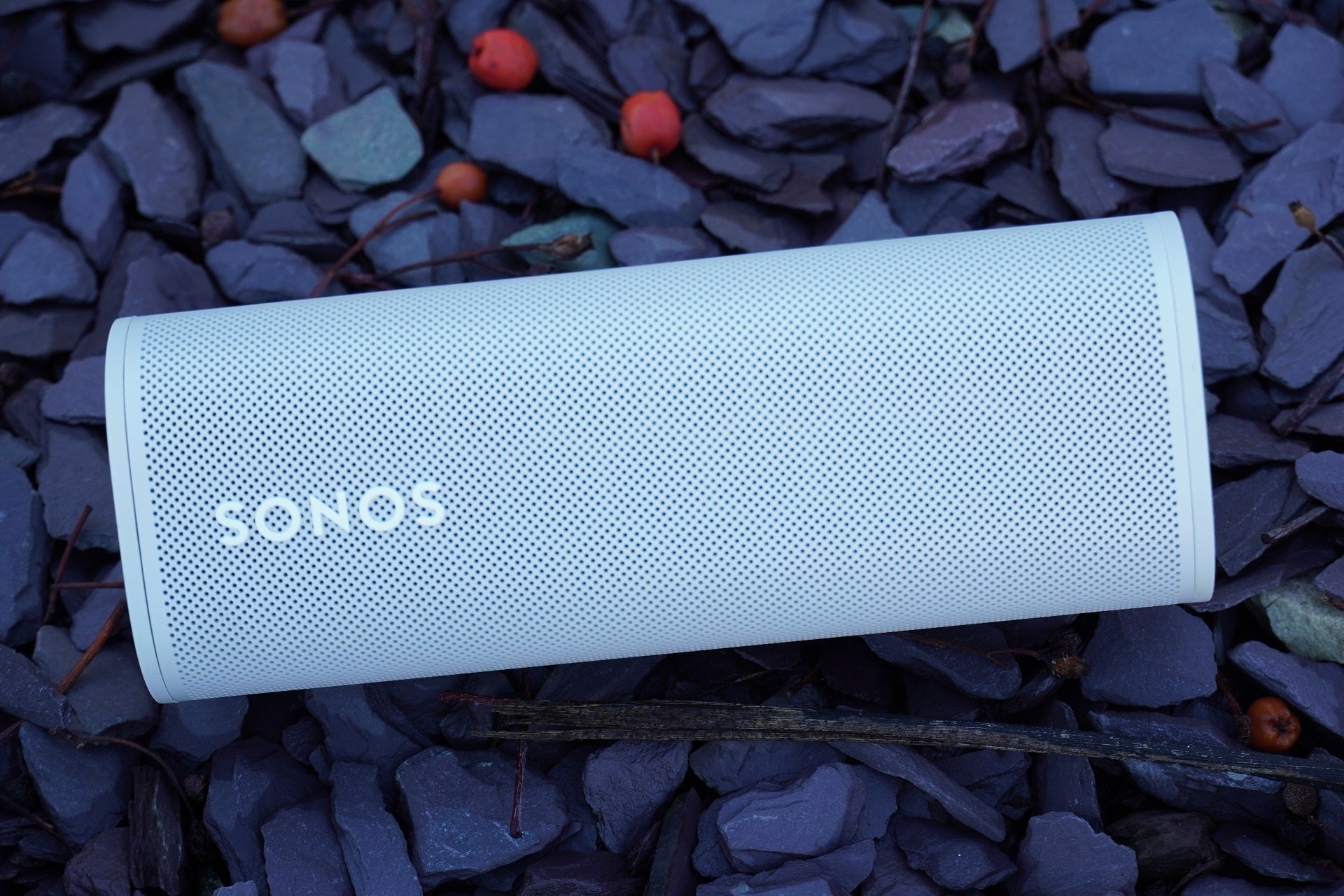Verdict
Sonos’ Roam is the portable speaker we thought the Move could be. As a cheaper, smaller alternative to the bigger speaker, it boasts excellent sound quality, an impressive list of features, and a build quality that will help it survive outdoors.
Pros
- Excellent, neutral-sounding performance
- Well built
- New features are useful
- Easy to use
- Auto Trueplay
Cons
- Sonos S2 little flaky with new features
- Rather functional looks
- Wireless charging plate an optional extra
Introduction
When it emerged that Sonos was working on a portable Bluetooth speaker, the actual product that arrived was different than the one we imagined in our minds.
It still ended up being a great Bluetooth speaker in the Move, but it didn’t sate those looking for a portable speaker that you could carry easily into a bag and take with you on your travels. The Sonos Roam fulfils the potential of that idea.
The Roam expands Sonos’ horizons even further, a portable speaker in the truest sense, and one that offers an excellent all-round performance.
Availability
- UKRRP: £159
- USARRP: $169
- EuropeRRP: €179
- CanadaRRP: CA$229
- AustraliaRRP: AU$299
The Sonos Roam was priced at £159 / $169 / €179 / CA$229 / AU$279 when it first went on sale. The price has gone up since by £20 in the UK. There is a cheaper version of the portable speaker in the Roam SL, which drops the built-in microphones from the feature set.
The Roam Wireless Charger is also available and in the UK that costs £44.
Design
- Sturdy build quality
- Respectable looks
- Lightweight design
The Sonos Roam is a portable speaker shaped like Toblerone. According to Sonos, you could fit six Roams inside one Move, which speaks to the Roam’s differing modus operandi. The Move is best suited for gardens and parks, the Roam is the speaker you’ll take with you on your travels far from home.
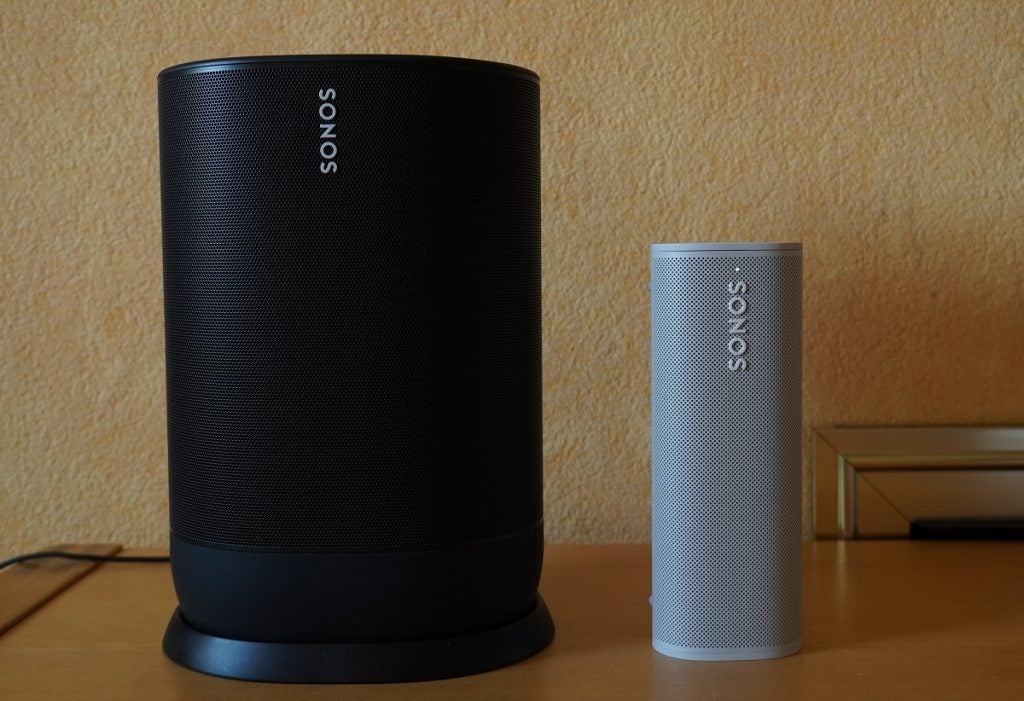
It lines up with the modern design approach Sonos has applied to its recent speakers, with its sealed design and mesh pattern that indicates the front of the speaker. If you look at it from the right angle (or light), you can see the honeycomb pattern that covers the tweeter and custom racetrack mid-woofer inside.
Physical tactile controls sit on top (or side, depending on the orientation) for playback, volume control and the microphone on/off. There are little nubbins (or feet) on its bottom, while around the back you’ll find a multi-function button powering the speaker on/off and flipping between Bluetooth and Wi-Fi modes.
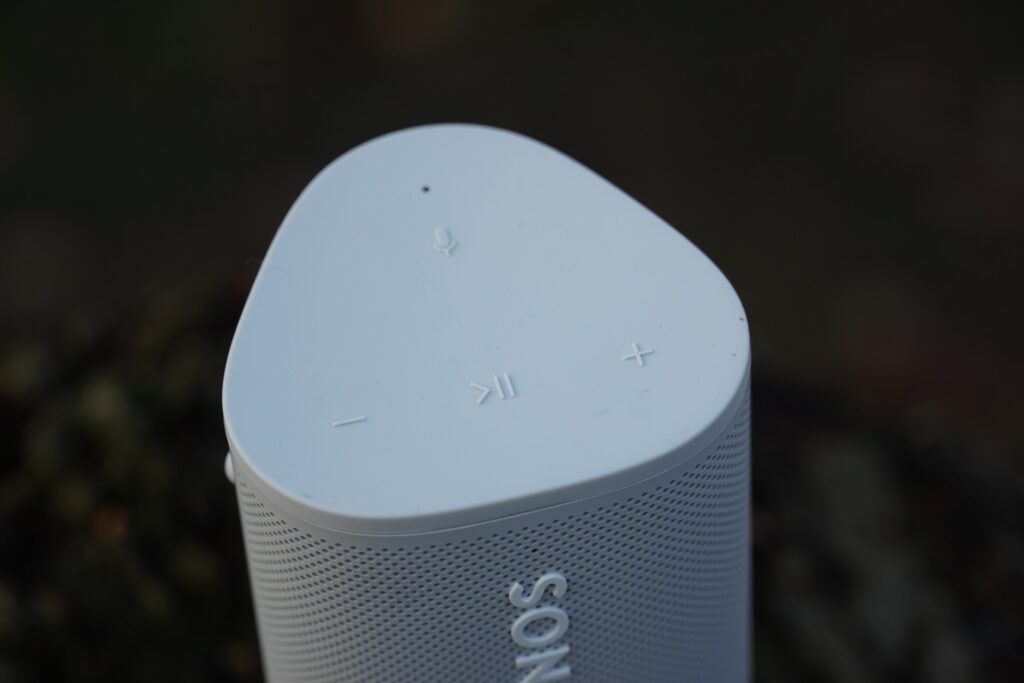
In short, it’s a speaker that’s easy to operate, and it appears that Sonos has worked out the kinks of manually switching between Wi-Fi and Bluetooth modes. Hold it down for a short time and it switches to Bluetooth, hold it down for longer and it powers down.
The Roam is well built – there’s nothing toy-like about its feel or appearance. I’d call it anonymously sleek and refined, but typically Sonos. At 430g, it’s lightweight but feels solid in the hand, its IP67 rating allows the speaker to be submerged into water of 1m depth for thirty minutes.
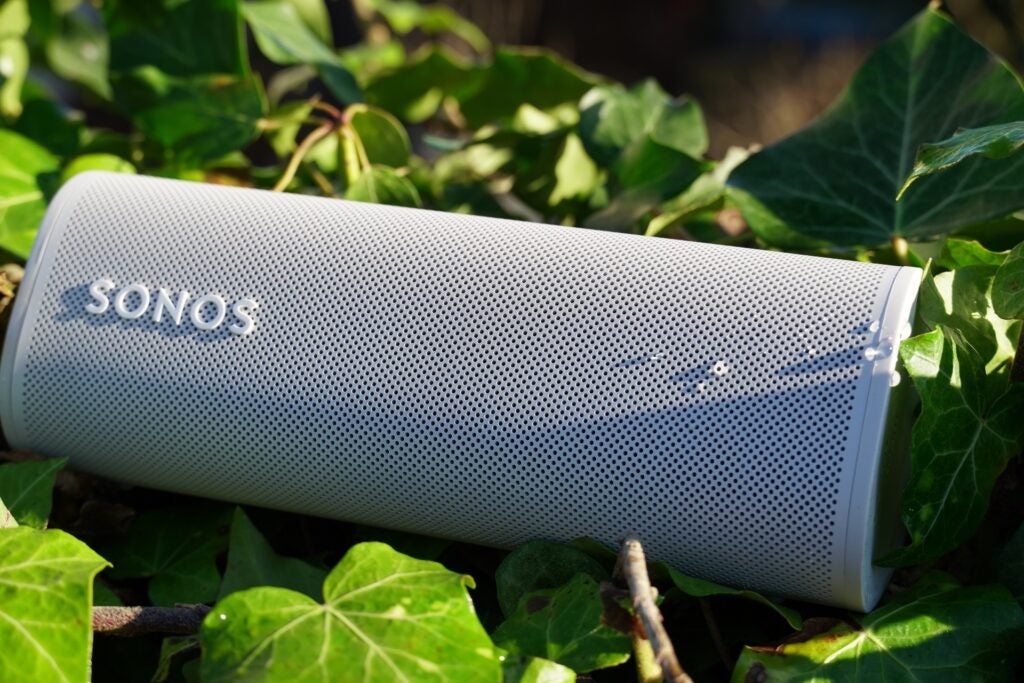
Since launch it’s been made available in a wider range of colours, red, blue and green joining the original Shadow Black and Lunar White. It adds a little more fun to the Roam’s once austere appearance.
That it can be used vertically and horizontally adds flexibility in terms of placement. Upright to fit on a bookshelf or horizontal on a wider, flatter surface. Potentially, the only real knock is the lack of a hook or strap, which would have made it even more versatile for hanging off backpacks and the like. There is a mountable travel case (£20) that Flexson sells for the Roam.
Features
- Sound Swap and instant Bluetooth/Wi-Fi switching
- Wide music streaming support
- Auto Trueplay for optimising audio
Like the Move, the Roam can connect to your Wi-Fi, it behaves like any other Sonos speaker in the home; take it outdoors, and it transforms into a Bluetooth speaker.
Connected via Wi-Fi offers Alexa, Google Assistant integration, along with Sonos Voice Control. The Sonos S2 app also features access to a bundle of music streaming services, while Apple AirPlay 2 offers streaming from iOS devices (and brings Siri to the party). Like the Move you can’t use the Roam as rear speaker in a home cinema set-up.
Setting up voice support is a breeze, and after initial teething issues with battery life, Sonos updated to improve it when Google Assistant is enabled.
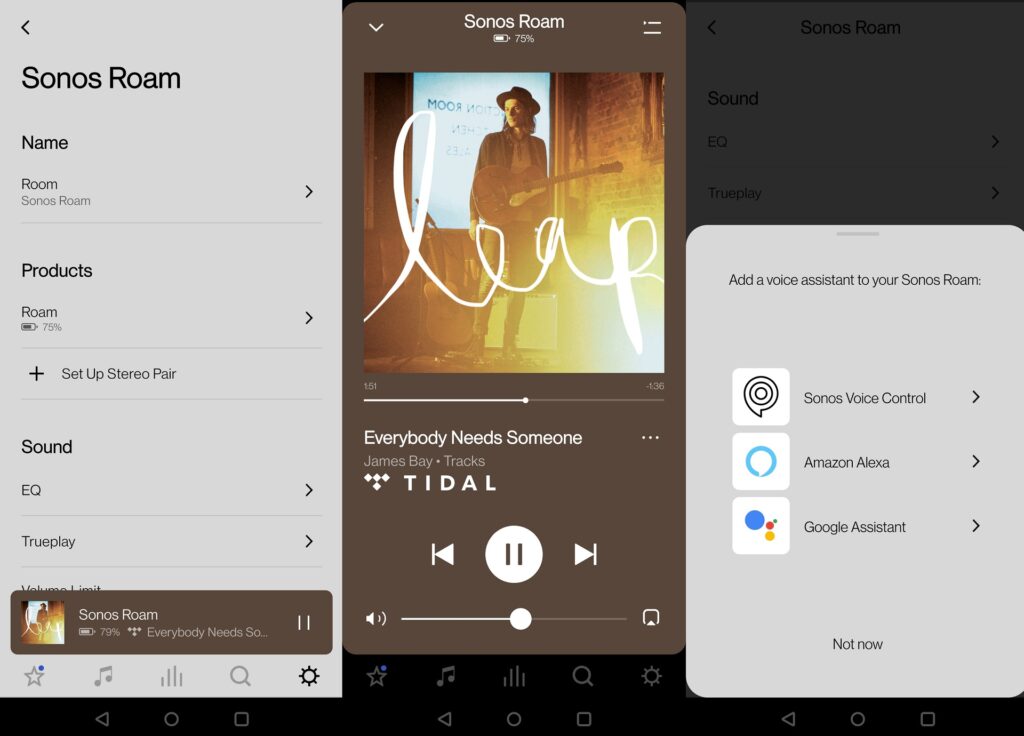
Battery life is up to 10 hours – again, the same as the Move. An hour of streaming music in Tidal saw the speaker drop 10% so that does seem eminently achievable, but it’s worth focusing on the words “up to”.
Battery life will differ depending on the music you listen to and volume you listen at. The figure of 10 hours does seem low for the price. The likes of the JBL Charge 5 and Marshall Emberton II go for much longer, as does the cheaper Wonderboom 3 from Ultimate Ears.

There’s a USB-C connection around the back, but I think you’ll want to keep the USB-C cable that comes with the Roam safe for the time being. I’ve used two other cables to see if they’d charge the Roam from the mains and a laptop and both had little effect.
Sonos recommends a 10W USB power adapter to be sure. The Roam does support Qi wireless charging, but the plate is available separately.
Putting the speaker into standby mode saw the battery levels drop by about 11% over a 13–14-hour period, so my advice is to turn the speaker off completely when you’re not using it unless you want the speaker to quickly wake. There’s also a battery saver option in the S2 app that reduces the rate at which the battery depletes in standby.

Sonos’ Auto Trueplay optimises the audio for whichever environment the Roam finds itself in. Its appearance removes the need to manually calibrate the speaker – which, quite frankly, is a godsend. If you listen carefully then you can hear a slight change in pitch, but the result is a consistent performance wherever you are.
The introduction of the Roam has brought a few new interesting features. One is the Sound Swap feature, whereby holding the play/pause button sends music to the nearest Sonos speaker. And it works, speedily sending music to my closest Sonos speaker.
The other feature is automatic reconnection with a smartphone once the Roam has left the comfort of the Sonos mesh network. Having travelled to a family member’s house and powered up the Roam, it needed no invitation to pair with a smartphone. Returning home and it’s back on the Wi-Fi.
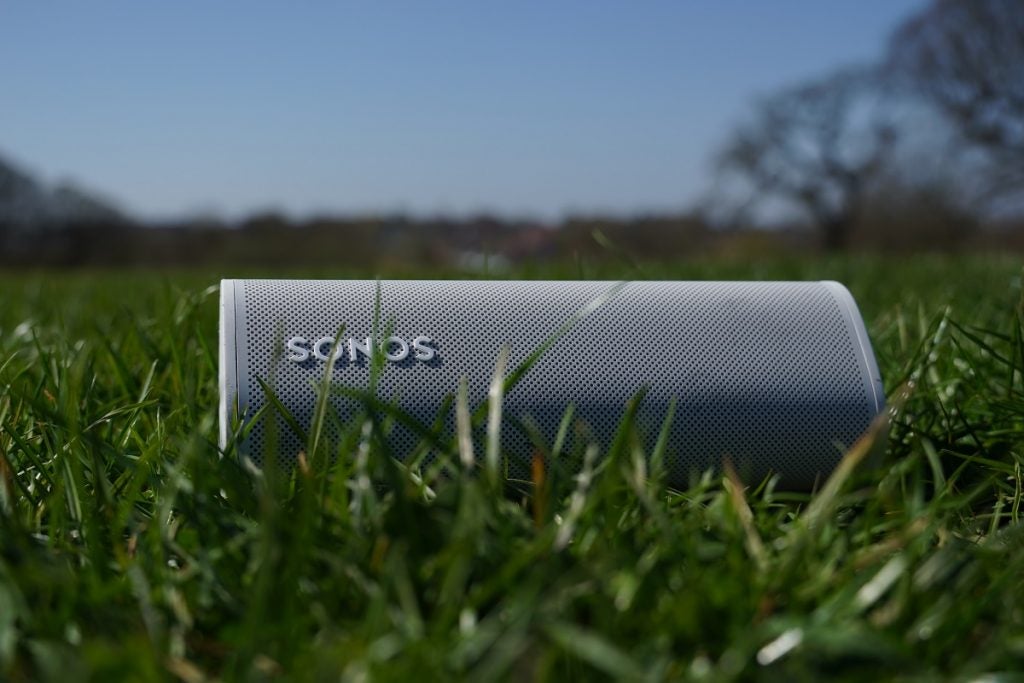
Sound Quality
- Clear and detailed sound
- Impressive vocals
- Versatile sound
Not surprisingly, considering it’s a Sonos product, the Roam sounds really good. That’s not to say Sonos’ entry into the (true) portable speaker market beats the competition hands-down, but few can match the refinement of the Roam.
It has a similar character to the Move and One SL. Obviously, it isn’t as big-sounding or as bassy as the Move, while the One SL sounds ‘fuller’ in its presentation. Nevertheless, the Roam’s performance is distinctly Sonos in tone.
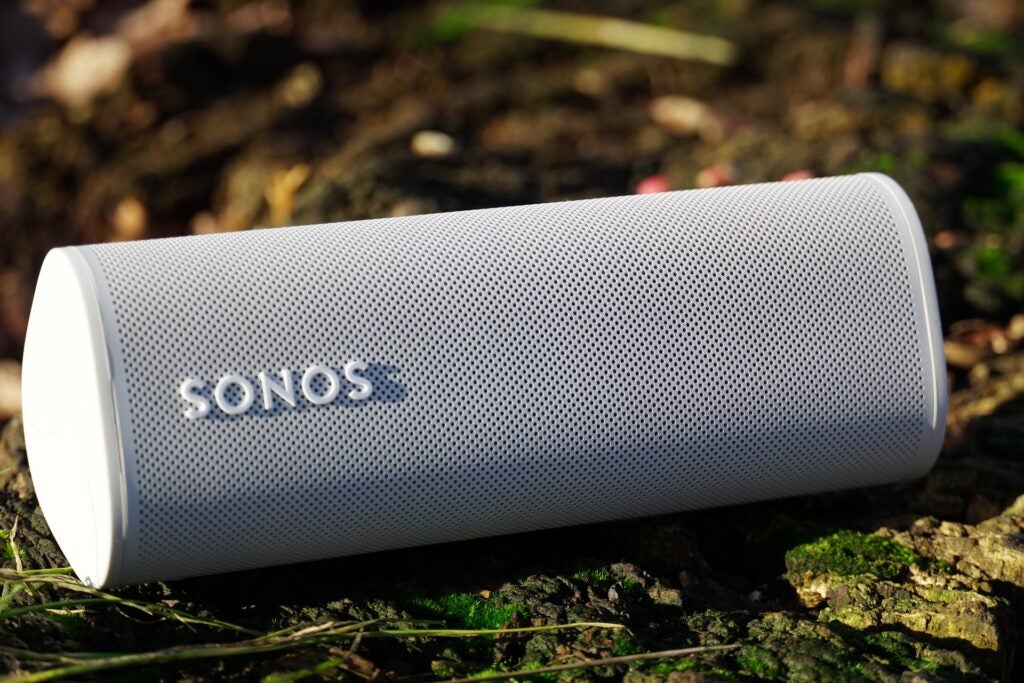
What impresses is its mid-range clarity and the naturalism of its performance. The Roam affords voices with great clarity, presence and detail as evidenced by Anette Askvik’s Liberty. Every note is heard, and all without a hint of sibilance.
Bass is the aspect of the Roam’s performance that it its weakest. Low frequencies have a defined and punchy presence that’s distinct enough from the mid-range. However, the Ultimate Ears Boom 2 has more presence, and in terms of bass depth, the Roam can’t match the Bang & Olufsen’s Beosound A1 2nd Gen.
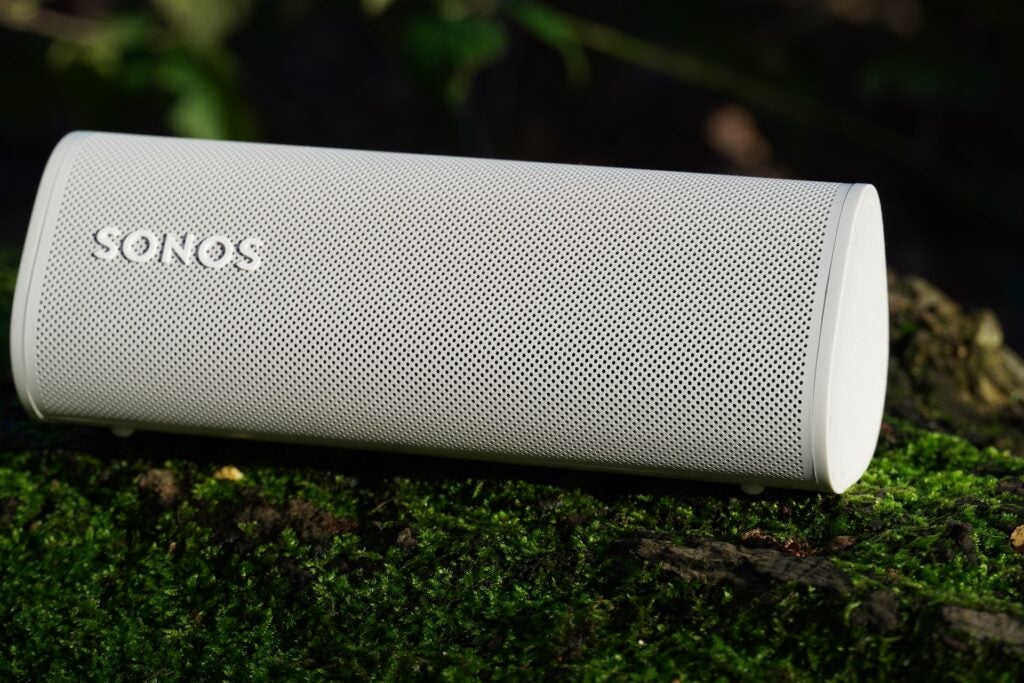
The Roam does beat the Boom 2 for clarity, the UE speaker features hazy tone compared to the Roam’s breezy naturalness. If we’re nit-picking then the soundstage the Roam presents is a compact one, and that can add to the sense of clutter with some busier tracks. However, this is mitigated by the ‘size’ of its sound, which easily fits a medium-sized room and makes plenty of din outside.
Treble is conveyed well, adding a pleasing sense of bite and detail at the top of the frequency range, which contributes to the Roam’s impressive sense of tonal balance. Rarely have I come across a song that is undercooked with this speaker – music is delivered in a measured and confident way. Its sense of fidelity leaves most of the competition trailing. There are arguably more exciting and attention-grabbing speakers than the Roam, but I enjoy the refinement it offers.
Dynamically, the Roam delivers a fluid sense of peaks and troughs, while Tom Morello’s cover of Voodoo Child sees the Roam issue plenty of drive and power to unpack that song’s energy. It’s an impressive all-round performance with a range of music genres.
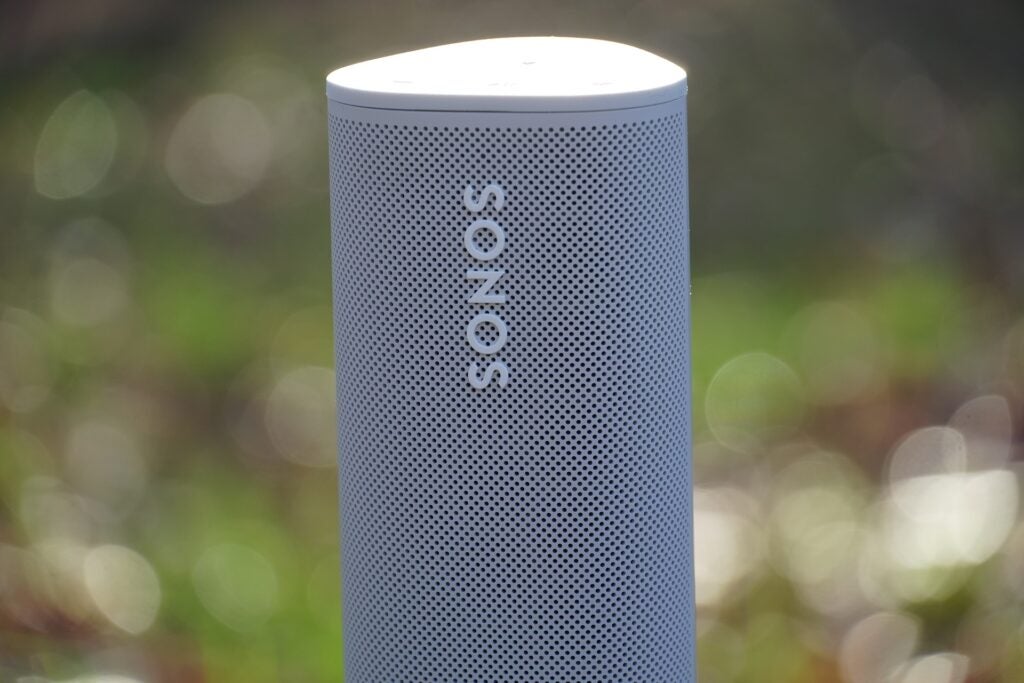
Latest deals
Should you buy it?
You’re after one of the best-sounding portable speakers on the market: There’s little compromise in terms of the Sonos experience: the build quality excels, it’s easy to use and it sounds great.
You’re after more bass: There’s a punchy sense of bass to the Roam’s output, but those looking for a bigger, energetic performance should consider alternatives such as the rich-sounding and similarly prices Audio Pro P5.
Final Thoughts
The Roam hits the mark in taking Sonos’ sound into the portable arena. It’s packed full of features for the indoors and out; sounds terrific with all manner of tracks. It’s easy to use, and the build quality is strong enough to survive whatever the outdoors can throw at it.
For existing Sonos owners looking to expand the reach of their devices out of the home, it makes plenty of sense. For everyone else it’s a satisfying entry into the world of Sonos.
How we test
We test every wireless speaker we review thoroughly over an extended period of time. We use industry standard tests to compare features properly. We’ll always tell you what we find. We never, ever, accept money to review a product.
Find out more about how we test in our ethics policy.
FAQs
Neither Google Assistant or Amazon Alexa will work on the Bluetooth connection, just over Wi-Fi. The Bang & Olufsen A1 2nd Gen does offer Alexa support over Bluetooth.
Jargon buster
Bluetooth
Bluetooth – named after 10th-century Danish king Harald Bluetooth who united Denmark’s tribes into a single kingdom – is a method of wireless transmission that allows for the exchange of data between devices over short distances.



















